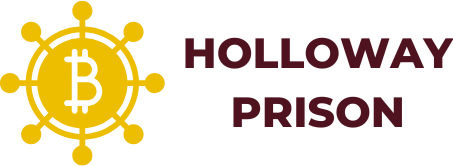In a world where pajamas have become the new power suit, remote-friendly software is the unsung hero of productivity. It’s like having a personal assistant who never complains about coffee runs or takes extended lunch breaks. With the right tools, teams can collaborate seamlessly from their kitchen tables or cozy home offices, proving that work can happen anywhere—even in fuzzy slippers.
But not all software is created equal. Some tools are as useful as a chocolate teapot, while others elevate remote work to new heights. The right remote-friendly software can transform chaos into harmony, making tasks smoother than a cat video binge. Let’s dive into the best options that keep teams connected, engaged, and maybe even a little bit entertained while they conquer their to-do lists from a distance.
Table of Contents
ToggleWhat Is Remote-Friendly Software?
Remote-friendly software refers to applications designed to enable efficient collaboration, communication, and productivity for distributed teams. These tools facilitate seamless interactions irrespective of team members’ geographic locations. Examples include video conferencing platforms, project management systems, and file-sharing services.
The primary function of remote-friendly software is to bridge the gap caused by physical distance. By utilizing such software, teams can communicate in real time and efficiently share information. Popular options like Slack, Zoom, and Trello exemplify how technology supports a flexible work environment.
Collaboration features often play a crucial role in remote-friendly software. Real-time editing capabilities and integrated chat functions enhance teamwork, allowing users to work together without hindrance. Many applications also prioritize security and privacy, protecting sensitive data shared between users.
User-friendliness significantly impacts the effectiveness of these tools. Intuitive interfaces help reduce the learning curve, enabling employees to adopt the software quickly. Training resources and community support further improve user experiences.
Integrating remote-friendly software into daily operations increases team engagement and productivity. Businesses can streamline workflows, automate repetitive tasks, and foster a more connected work environment. As remote work continues to grow, leveraging the right software becomes essential for maintaining efficiency and communication within teams.
Benefits Of Remote-Friendly Software
Remote-friendly software enhances collaboration and productivity across teams, fostering connections despite physical distances. These tools contribute significantly to efficient workflows and communication.
Improved Collaboration
Remote-friendly software supports real-time collaboration, allowing teams to work together from various locations. Applications with features like shared documents and editing capabilities streamline projects. Users can engage in simultaneous updates, making feedback instantaneous. Integrated messaging and video conferencing features reduce delays and enhance communication. A unified platform minimizes the need for multiple tools, simplifying the workflow. Enhanced visibility into tasks promotes accountability, ensuring that all team members stay aligned on project goals.
Increased Flexibility
Flexible work environments thrive with remote-friendly software that adapts to diverse schedules and work styles. Users can access platforms from any device, making it easy to stay connected while on the go. This software accommodates various time zones, enabling teams to collaborate effectively regardless of location. Task management features help prioritize projects based on urgency, while customizable notifications keep users informed about updates. Remote-friendly software also supports asynchronous communication, allowing team members to contribute at their convenience, which boosts productivity and job satisfaction.
Popular Remote-Friendly Software Options
Remote-friendly software has transformed how teams operate. These tools optimize collaboration and communication for remote workers.
Project Management Tools
Trello offers a visual approach to task organization. It enables users to create boards, lists, and cards for managing projects efficiently. Asana focuses on task assignments and timelines, helping teams track progress seamlessly. Monday.com provides customization options, allowing users to tailor workflows to match specific project needs. These tools enhance accountability and clarity among team members.
Communication Platforms
Slack serves as a central hub for team messaging, allowing users to categorize conversations through channels. Microsoft Teams integrates video conferencing and document sharing within a single application. Zoom excels in video communication, offering features for webinars and virtual meetings. Google Meet ensures easy access through web browsers, promoting more spontaneous interactions. These platforms facilitate real-time engagement, making it easier for teams to stay connected despite physical distances.
Key Features To Look For
When selecting remote-friendly software, certain features gain importance for maximizing productivity and collaboration. Understanding these features often ensures a seamless experience for distributed teams.
User Interface
An intuitive user interface enhances user experience. Users expect clean designs that simplify navigation and access to essential functions. Well-organized dashboards streamline workflows, while customizable options allow teams to tailor the software according to their preferences. Responsiveness across devices ensures accessibility, enabling team members to work efficiently from various locations. Software with intuitive interfaces reduces the learning curve, allowing teams to adapt quickly and maintain focus on tasks.
Integration Capabilities
Integration capabilities hold significant importance in remote-friendly software. Software that integrates smoothly with existing tools and platforms enhances collaboration and avoids disruptions. This flexibility supports task automation, reducing manual input and increasing efficiency. Notifications from integrated tools keep team members informed without needing to switch applications. Strong integration often supports a unified experience, allowing teams to consolidate key functions in one place. Ultimately, powerful integration capabilities foster a connected, productive environment that supports diverse workflows.
Embracing remote-friendly software is crucial for teams navigating the modern work landscape. These tools not only enhance communication and collaboration but also adapt to diverse workflows and schedules. By choosing the right software, teams can streamline their processes and boost overall productivity.
Investing in effective remote-friendly applications empowers teams to stay connected and engaged, regardless of location. As remote work continues to evolve, the right software solutions will play a pivotal role in maintaining efficiency and fostering a collaborative environment. Teams that prioritize these tools will likely see improved performance and satisfaction in their work.





